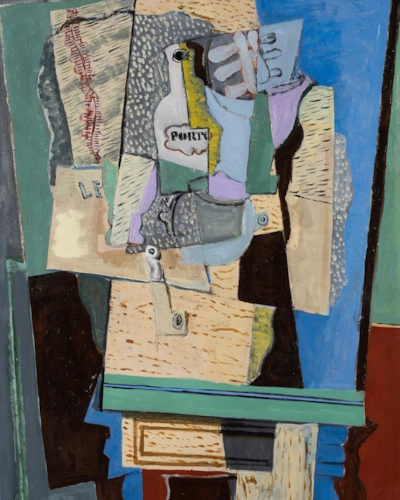Serge Charchoune
1888 - 1975
Composition Inspirée par le Credo de la Messe en C Mineur de Bach
Serge Charchoune
1888 - 1975
Composition Inspirée par le Credo de la Messe en C Mineur de Bach
116 x 73 cm (45 5/8 x 28 3/4 inches)
Signed and dated lower right, Charchoune 1959

This original painting by Serge Charchoune is available for immediate purchase.
Serge Charchoune
biography
At the outbreak of the First World War, he took refuge in Barcelona, forming friendships with Marie Laurencin, Albert Gleizes and Francis Picabia. In Paris during the 1920s he engaged closely with Dada: he briefly organised the circle Palata Poetov (House of Poets), issued the Russian-language magazine Perevoz Dada (Travelling Dada) and published an anthology of Dada poetry in German, French and Russian.
Charchoune remained attached to Dada’s experimental ethos while, from the mid-1920s, absorbing aspects of Purism after contact with Amédée Ozenfant. A solo exhibition at Herwarth Walden’s Der Sturm gallery, Berlin, in 1922 consolidated his reputation.
From the early 1950s his painting moved toward a pared-back abstraction, often near-monochrome, with finely graded modulations. Critics such as Michel Seuphor noted his restraint and his frequent recourse to musical structures; Charchoune himself spoke of music as a generative theme for composition.
He exhibited widely in France and abroad, including in Barcelona, Stockholm, Brussels, New York, Geneva and Prague. A major retrospective was presented at the Musée national d’Art moderne, Centre Georges Pompidou, Paris, in 1971.
Serge Charchoune
biography
you may also like
b. 1963
Blind folding
160 x 120 cm (62.99 x 47.24 inches)
1923 - 2012
Phenomena Spectrum Guardian
75.88 x 101.5 cm (29 ⁷/₈ x 40 inches)
1904 - 1989
P20-1976-H10
52.4 x 74.4 cm (20 ⁵/₈ x 29 ¹/₄ inches)
1909 - 1992
Les deux lunes
50 x 65.5 cm (19 ³/₄ x 25 ³/₄ inches)




















